#中国
Explore tagged Tumblr posts
Text

Weizhou Island, 1996 Weizhou Island, Guangxi, China. 中国 広西 北海市 涠洲岛 Photography by Michitaka Kurata
#china#guangxi#beihai#weizhou#weizhoudao#weizhou island#store#old town#nostalgic#photography#photographers on tumblr#color film#reversal film#slide film#film#35mm#35mm film#kodak#1996#中国#広西#北海市#涠洲岛#住宅#商店#カラーフィルム#リバーサルフィルム#スライドフィルム#カラーポジ#カラー写真
71 notes
·
View notes
Text


唐朝半臂/半袖 Tang dynasty men's half-sleeve shirt are beautiful, the patterns are absolutely gorgeous 😍 The style of the shirt is similar to the ru tops (襦) in the Weijin Dynasty, but the sleeves are not full length, and the patterns of the fabric and the material itself are different.


#hanfu#汉服#china#中国#chinese hanfu#culture#history#fashion#clothing#historical clothing#唐朝#半壁#半袖#tang dynasty#half sleeve#men's hanfu
32 notes
·
View notes
Text
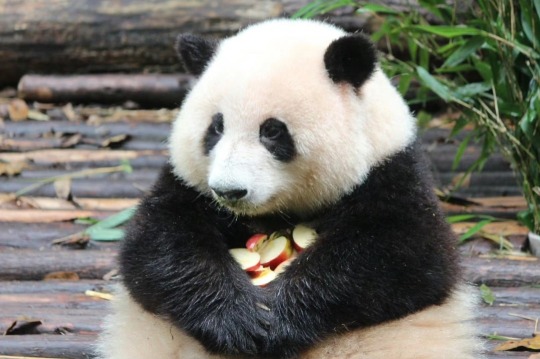

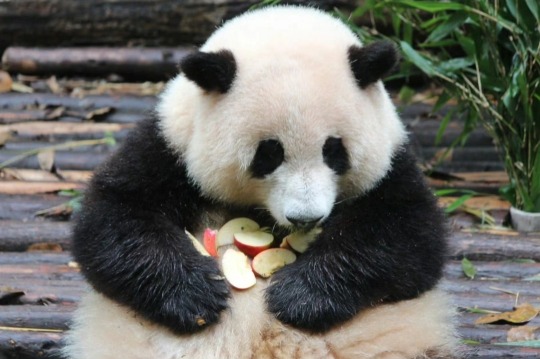
Hehua and her apples.
17K notes
·
View notes
Text
Main types of Chinese Opera pt. 1


There are many different types of chinese opera, so here are some of the main ones!
Peking Opera 京剧 (Jīngjù)
This is probably one of the most well-known operas, originating from Beijing during the Qing dynasty. There are 4 main roles:
1.生 (shēng), which is usually an older dignified male character such as a scholar, which can be divided into older, younger and martial 生 aka 武生 (wǔshēng)
2. 旦 (dàn), a female role which was previously played by men as women were not allowed to perform during the Qing dynasty, but nowadays both men and women can play this role. This role has several subtypes:
闺门旦 (guīméndàn), a young unmarried high-status virtuous woman, whose main focus is singing.
正旦 (Zhèngdàn)/青衣 (Qīngyī), an elegant, middle-aged, usually married woman who mainly sings.
花旦 (Huādàn), a young woman who unlike the Guīméndàn focuses on speech and movement.
武旦 (Wǔdàn), this is a martial arts role with quite a lot of stunts and fighting with rare singing moments
刀马旦 (Dāomǎdàn), a young brave warrior, who usually focuses on acrobatics, singing and dancing unlike the Wǔdàn.
老旦 (Lǎodàn), is an older female role, usually with a lower singing voice.
彩旦 (Cǎi dàn), is more of a clown role, which is apparently more commonly performed by men
4. 净 (Jìng), a "rough man" role, usually has a vibrant and strong character, which has heavy face painting.
5. 丑 (chǒu), the clown role, which is one of the most physically demanding roles due to the acting and acrobatics combo, despite being considered as a minor role.
There are over 1400 stories used in Peking Opera, with 2 traditional types, civil and martial. Civil focuses on the relationship between the characters and is usually about normal daily occurrences, whereas martial is more about action and fighting. Another more modern type of differentiation divides the plays into traditional (pre-1949ish), plays created after 1949, and contemporary plays.


Kunqu Opera 昆曲 (kūnqǔ)
This is one of the oldest types of Chinese opera, originating from Kunshan, combining signing, dancing and martial arts. It features similar characters like the Peking Opera with another character 末 (Mò), who is an old man with a long beard.
However, there are some differences, as Kunqu uses softer, melodic music and different instruments such as the flute as the main accompanying instrument rather than Peking Opera's stringed instruments. The types of stories are also different, as Kunqu's focus more on the romantic and poetic aspect, exploring various classical stories. Peking Opera's stories tend to be a bit more varied as previously mentioned.
Traditionally, Kunqu was mostly for the upper-class as the stories performed were classical Chinese literature, and at the time not everyone had the opportunity to learn. This may be why Kunqu typically uses classic chinese, whereas Peking uses a combination of both classic and vernacular, making it more available for everyone.


Yue Opera 越剧 (yuèjù)
This opera is also known as Shaoxing opera, originating from Shaoxing, Zhejiang in early 1900s. Originally the performances featured only male actors but nowadays all-female performance troupes are becoming the standard. It's interestingly the 2nd most loved opera type, just after Peking Opera as it's slow and romantic form is perfect for love stories such as The Butterfly Lovers.
Yue Opera also features the usual set of character types e.g. 生,旦 etc. except they are usually played by women.
In terms of appearance, Yue Opera tends to go for a more subtle makeup look (as subtle as stage makeup can be) and simpler but nonetheless gorgeous costumes, in contrast to Peking Opera's dramatic and bursting colors.
Yue Opera usually relies on string instruments, with a smaller musical ensemble and musical accompaniment so that the performers singing is more clear unlike Peking Opera's stronger background music.


#chinese opera#theatre#越剧#昆曲#京剧#peking opera#peking#china#chinese culture#chinese#китай#中国文化#中国#new interest unlocked#slavic roots western mind#opera#kunqu#yueju#yue opera#music
353 notes
·
View notes
Text

China
© Marilyn Mugot
719 notes
·
View notes
Text
先日の中国の領空侵犯した情報収集機Y-9


これは台湾侵攻に先立って邪魔になる日米のレーダーや艦艇、軍事施設を観測したものです。
つまりはこうです↓


データを持ち帰りましたので分析して攻撃に使用します
つまりはこうです↓

台湾侵攻の邪魔になる施設や艦艇の破壊の準備を進めてるみたいです
180 notes
·
View notes
Text

"お知らせ"
2024/7/19~22
中国・広州で開催される「FIREFLY ACG FESTIVAL」
イベント内の "VISONS特展"にイラストを 展示させて
頂ける事になりました☆
是非宜しくお願いします
☆请一定来玩☆
7/19~7/22 广州保利世贸博览馆
#art#artist#design#illustration#original#illustrator#illust#イラスト#絵#イラストレーション#オリジナル#オリジナルイラスト#宣伝#お知らせ#告知#展示#展示会のお知らせ#中国#かわつ ゆうき#yuki kawatsu
154 notes
·
View notes
Text
在冬季,中日友好醫院南園之池水已被抽盡。
冬には、中日友好病院の南園の池の水は全部抜かれた。
In winter, all the water was drained from the pond in the south garden of the China-Japan Friendship Hospital.


#china#中國#中国#photography#japan#日本#hospital#garden#pond#pool#water#chinese architecture#architecture#scenery#landscape#beijing#travel#旅行#北京#風景#風景写真#攝影#写真#醫院#病院#建築#建築写真#庭園#園芸#水
42 notes
·
View notes
Text
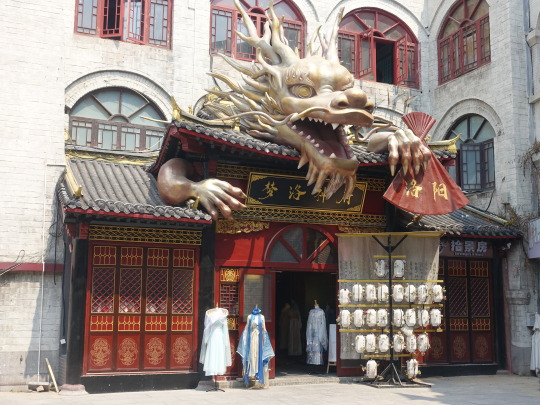
汉服硬核版。
A pretty hardcore Hanfu store.
530 notes
·
View notes
Text
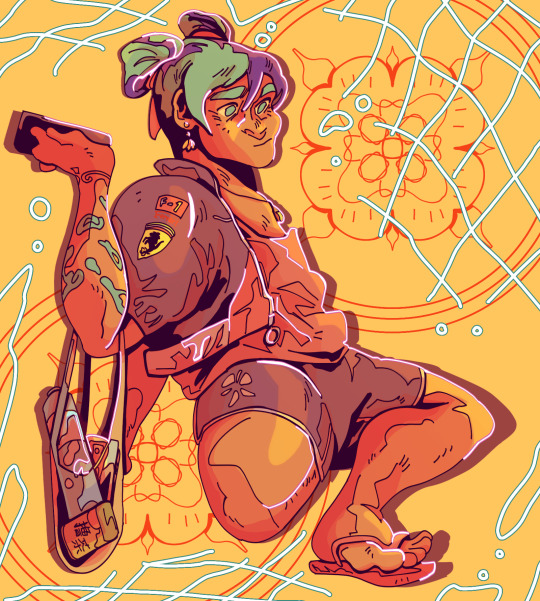
Wasian (🇮🇹+🇨🇳) Miku
#hatsune miku#vocaloid hatsune#hatsune fanart#vocaloid#vocaloid fanart#vocaloid art#vocaloid miku#miku fanart#miku#chinese fashion#chinese culture#italy#italian fashion#italia#中国#中国人#italiano#digital art#sketchbook#sketch#drawing#art#artists on tumblr#multicultural#biracial
100 notes
·
View notes
Text



Ming dynasty hanfu - aoqun
(ignore the shoji I don't have much Chinese stuff ok. Imagine she's an ambassador or whatever)


(^^^^^ not the hanfu I was inspired by, just an example, but I changed the design enough anyway so it doesn't matter)
59 notes
·
View notes
Text

Shanghai, 2000 Shanghai, China. 中国 上海市 Photography by Michitaka Kurata
#china#shanghai#store#urban#urban landscape#street#street corner#bicycle#photography#photographers on tumblr#color film#color negative film#negative film#film#35mm#35mm film#ricoh#2000#中国#上海#上海市#都市風景#街角#商店#自転車#ネガフィルム#カラーフィルム#カラーネガ#カラーネガフィルム#カラー写真
653 notes
·
View notes
Text
"Let me see which little Tang figurine ran out again!"
People mentioned in the last Tang styled video how amazing it would be for museum employees to dress up in historic fashions while at work. I agree! That would be absolutely INCREDIBLE!
(While dressed in Hanfu and visiting a museum, I once got mistaken for a statue xD The poor guest got quite a scare when I started moving 😂😂)
Src: 长歌要努力吖 【博物馆在职唐俑总要粘上点班味】 https://www.bilibili.com/video/BV1Tz421Y7iT/
#hanfu#汉服#china#中国#chinese hanfu#culture#history#fashion#clothing#historical clothing#唐朝#tang dynasty
23 notes
·
View notes
Text



Giant pandas have grown in the rice fields! In Chengdu, Sichuan province, colorful rice plants have been cultivated into patterns of giant pandas.
633 notes
·
View notes
Text
Those cheap clothes at Shein have a big price tag which few consumers are able to see.
This is the sound of Panyu, the neighbourhood known as the "Shein village", a warren of factories that power the world's largest fast fashion retailer. "If there are 31 days in a month, I will work 31 days," one worker told the BBC. Most said they only have one day off a month. The BBC spent several days here: we visited 10 factories, spoke to four owners and more than 20 workers. We also spent time at labour markets and textile suppliers. We found that the beating heart of this empire is a workforce sitting behind sewing machines for around 75 hours a week in contravention of Chinese labour laws. [ ... ] But even past 22:00, the sewing machines - and the people hunched over them - don't stop as more fabric arrives, in trucks so full that bolts of colour sometimes tumble onto the factory floor. "We usually work, 10, 11 or 12 hours a day," says a 49-year-old woman from Jiangxi unwilling to give her name. "On Sundays we work around three hours less." She is in an alleyway, where a dozen people are huddled around a row of bulletin boards. They are reading the job ads on the board, while examining the stitching on a pair of chinos draped over it. [ ... ] The migrant worker from Jiangxi is looking for a short-term contract - and the chinos are an option. "We earn so little. The cost of living is now so high," she says, adding that she hopes to make enough to send back to her two children who are living with their grandparents. "We get paid per piece," she explains. "It depends how difficult the item is. Something simple like a t-shirt is one-two yuan [less than a dollar] per piece and I can make around a dozen in an hour."
Let's do a little math. One Chinese Yuan = 13.81 US cents (or $0.1381) as of Monday. So if the migrant worker from Jiangxi earns CN¥ 2.00 per t-shirt (US$0.2762) and does a dozen in one hour, she is effectively earning US$3.31 per hour. For comparison, the US minimum wage was US$3.35 per hour in between 01 January 1981 and 01 April 1990.
The working hours at Shein factories are as miserable as the pay. A "standard" working day is 14 hours.
Standard working hours appear to be from 08:00 to well past 22:00, the BBC found. This is consistent with a report from the Swiss advocacy group Public Eye, which was based on interviews with 13 textile workers at factories producing clothes for Shein. They found that a number of staff were working excessive overtime. It noted the basic wage without overtime was 2,400 yuan (£265; $327) - below the 6,512 yuan the Asia Floor Wage Alliance says is needed for a "living wage". But the workers we spoke to managed to earn anywhere between 4,000 and 10,000 yuan a month. "These hours are not unusual, but it's clear that it's illegal and it violates basic human rights," said David Hachfield from the group. "It's an extreme form of exploitation and this needs to be visible." The average working week should not exceed 44 hours, according to Chinese labour laws, which also state that employers should ensure workers have at least one rest day a week.
There are other issues mentioned in the article such as the sourcing of cotton from Xinjiang where the Chinese Communist Party is committing genocide against the Uighur people.
Don't buy clothing made in sweatshops from ANY country. In the US it was sweatshop conditions at clothing manufacturers which were one of the spurs for the growth of labor unions in the early 20th century.
I would add that "fast fashion" is generally wasteful and bad for the environment. Buy clothes which are not likely to quickly become unfashionable and those which are sturdy enough to last for a while.
#shein#clothing manufacturers#fast fashion#sweatshops#china#panyu#labor laws#bbc#asia floor wage alliance#a living wage#public eye#xinjiang#中国#快时尚#血汗工厂#番禺区#生活工资#劳动法#新疆#赤納粹
41 notes
·
View notes
Text
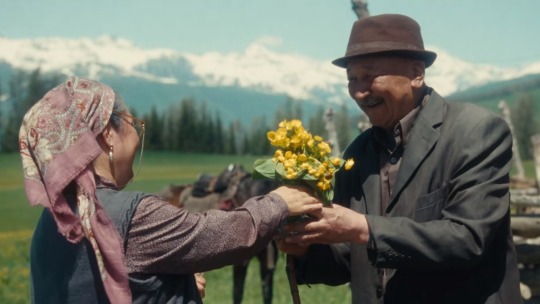
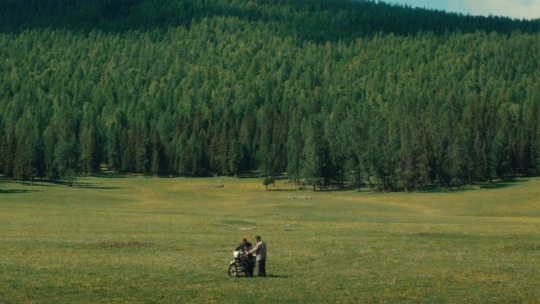
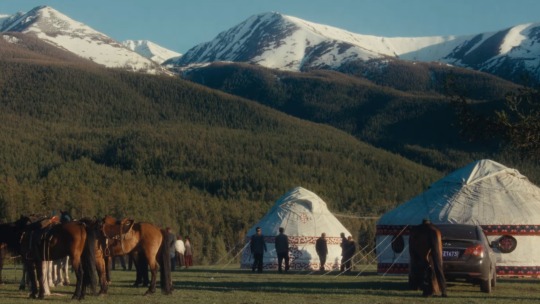
To the Wonder 我的阿勒泰 (2024)
#Cdrama#Still#Central Asia#Kazakh#Steppe#Chinese Drama#中文#China#Xinjiang#Chinese#中国#Orta Asya#Nomadic
312 notes
·
View notes